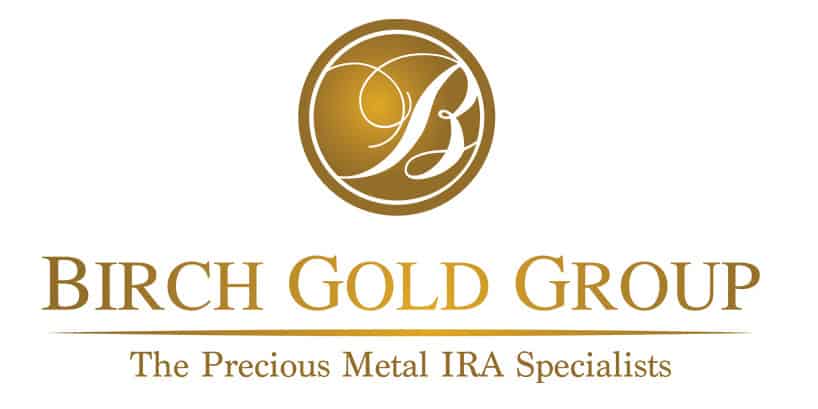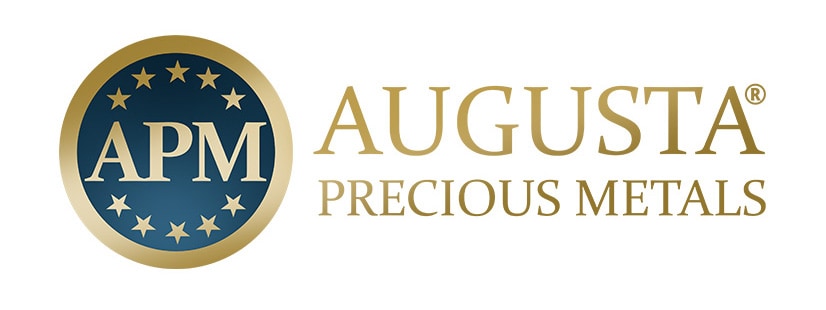Can I Transfer Existing Retirement Savings To A Silver Ira?
Can I Transfer Existing Retirement Savings To A Silver Ira?
Are you considering transferring your existing retirement savings to a silver IRA? If so, it’s important to understand the ins and outs of this investment option.
A silver IRA is a self-directed individual retirement account that allows you to invest in physical silver bullion or coins as a way to diversify your portfolio and protect against inflation.
Before making the decision to transfer your retirement savings, there are several factors you need to consider, such as eligibility requirements, choosing a custodian, funding options, and potential risks.
In this article, we’ll provide an overview of everything you need to know about transferring your retirement savings to a silver IRA. By the end of this article, you will have all the information necessary to make an informed decision about whether a silver IRA is right for you.
Secure your wealth by diversifying in precious metals through an IRA! Safeguard against inflation and global financial instability for long-term value. Act now for financial security – start your precious metals IRA today!
Key Takeaways
– Transferring existing retirement savings to a silver IRA is possible but requires checking retirement plan for transfers, choosing a reliable custodian, and considering funding options and associated risks.
– The benefits of investing in a silver IRA include diversifying portfolio and protecting against inflation, but it also involves risks such as price volatility, storage costs, and potential theft or damage.
– Tax advantages of a silver IRA are similar to traditional IRAs, but it is crucial to understand tax implications and penalties before making withdrawals.
– To ensure successful investment, it is important to diversify the portfolio, conduct regular performance analysis, and understand IRS rules to avoid penalties or disqualification of account. Seeking advice from a financial advisor specializing in precious metals investments may also be helpful.
Understanding Silver IRAs
You can transfer your retirement savings to a silver IRA, allowing you to hold physical silver in your retirement account instead of traditional investments like stocks and bonds.
Silver IRAs are self-directed individual retirement accounts that allow you to invest in physical precious metals, including silver bullion coins and bars. The value of your investment will depend on silver prices and market trends, which can be volatile but also offer potential for high returns.
Investment strategies for silver IRAs include diversifying your portfolio with other assets such as gold or platinum, as well as timing your purchases based on market trends. It’s important to consult with a financial advisor before making any investment decisions to ensure they align with your overall retirement goals.
To be eligible for transferring retirement savings into a silver IRA, you must have an existing traditional IRA or 401(k) plan that allows for rollovers or transfers. Additionally, the IRS has specific guidelines regarding contributions and withdrawals from self-directed IRAs that should be considered before making any transfers.
With careful planning and guidance from professionals, transferring some of your retirement savings into a silver IRA can provide unique investment opportunities while still securing your future financial stability.
Eligibility for Transferring Retirement Savings
To be eligible for moving your funds into a precious metals IRA, certain requirements must be met. Here are some things to consider if you’re thinking about transferring from your 401(k) or rolling over from a traditional IRA:
– You must have an existing retirement account. To transfer funds into a silver IRA, you need to have an existing retirement account such as a 401(k) or traditional IRA.
– Your current plan must allow for transfers. Some plans may not allow transfers or rollovers. Check with your plan administrator before making any decisions.
– You can’t withdraw the funds yourself. The transfer process involves moving the funds directly from one custodian to another. If you withdraw the money yourself and then deposit it into your new account, you’ll be subject to taxes and penalties.
– There are contribution limits. Just like with any other type of IRA, there are limits on how much you can contribute each year. Make sure you understand these limits before opening a silver IRA.
– Timing is important. There are strict deadlines for completing transfers and rollovers. Make sure you understand these deadlines so that you don’t miss out on any potential tax benefits.
Now that you know what’s involved in transferring your retirement savings into a silver IRA, the next step is choosing a custodian who can help guide you through the process.
Choosing a Silver IRA Custodian
When looking for a Silver IRA custodian to guide you through the process of transferring your retirement savings, it’s important to choose someone who can offer expert advice on precious metals investment options. You want someone who is knowledgeable about the industry and can help you make informed decisions regarding your investments.
Look for a custodian with experience in handling Silver IRA accounts and who has good reviews from other customers. Another factor to consider when selecting a Silver IRA custodian is fees and charges. Make sure you understand all the costs associated with opening an account, maintaining it, and buying or selling precious metals. Some custodians may charge flat fees while others may take a percentage of your assets under management. Be sure to compare multiple options before making a decision.
It’s also important to find a custodian who puts your interests first. Choose one that offers personalized service and takes the time to understand your financial goals and risk tolerance. A good custodian will work with you to develop an investment strategy that aligns with your objectives.
Once you’ve selected a Silver IRA custodian, it’s time to open an account. This involves filling out paperwork and providing documentation such as proof of identity and source of funds. Your chosen custodian should be able to guide you through this process smoothly so you can start investing in precious metals as soon as possible.
Choosing the right Silver IRA custodian is crucial in ensuring successful transfer of your retirement savings into precious metals investment options without any hassle or extra expenses involved. Once you have found one that meets all your needs, opening an account becomes easy since they’ll provide guidance through every step necessary for the process completion successfully.
Opening a Silver IRA Account
Before proceeding with the process, it’s essential to find a reliable custodian that has experience in handling precious metal investment options. Once you’ve selected your custodian, opening a silver IRA account is a straightforward process.
The first step involves completing an application form that’ll require you to provide personal information such as your name, address, and social security number. After submitting the application form, your custodian will then transfer your existing retirement savings into your newly opened silver IRA account.
This process may take some time depending on the type of retirement account you’re transferring from and the amount of funds being transferred. However, once the funds have been transferred successfully, you can start investing in silver bullion or coins.
Investing in a silver IRA provides several benefits that make it an attractive option for retirement savings. Silver has historically been a safe haven asset during times of economic uncertainty and inflationary pressures. Additionally, physical assets like silver bullion offer protection against currency devaluation and financial instability, unlike paper assets such as stocks and bonds which are subject to market volatility and geopolitical risks.
While there are benefits of investing in a silver IRA, there are also risks associated with this type of investment. One major risk is price volatility since the value of precious metals can fluctuate rapidly due to market conditions or supply-demand imbalances. Moreover, storage costs may be involved when holding physical assets like silver bullion or coins which may add up over time.
With your new silver IRA account set up with a reliable custodian and knowledge about its potential risks and benefits now at hand, funding it should be next on your agenda without delay or hesitation!
Funding Your Silver IRA
When it comes to funding your Silver IRA, there are a few key points to keep in mind.
First, you’ll want to consider the types of transfers allowed – typically, you can transfer funds from an existing retirement account into your Silver IRA.
Additionally, it’s important to be aware of contribution limits and the timing and process of funding.
By staying informed about these factors, you’ll be able to make the most of your investment and ensure that your retirement savings are secure.
Types of Transfers Allowed
You can easily move your retirement savings into a silver IRA, as there are various types of transfers that are allowed.
One option is to do a direct transfer from your existing retirement account into a silver IRA. This type of transfer avoids any tax implications and allows you to keep the same amount of money invested in your retirement savings.
Another option is to roll over funds from an existing 401(k) or other qualified plan into a silver IRA. This rollover option may have tax implications depending on how it’s executed, so it’s important to consult with a financial advisor or tax professional before making this decision.
With either transfer method, it’s important to stay within the contribution limits set by the IRS for IRAs.
Moving forward, understanding contribution limits and how they impact your ability to fund your silver IRA is crucial.
Contribution Limits
To maximize your investment potential, it’s important to be aware of the contribution limits set by the IRS for individual retirement accounts.
For traditional and silver IRAs, the contribution limit for 2021 is $6,000 if you’re under age 50 and $7,000 if you’re 50 or older. However, these limits can change each year based on inflation.
If you’re considering a Roth conversion, keep in mind that there are no income limits for converting traditional IRA funds to a Roth IRA. However, contribution limits still apply to the amount you convert.
It’s important to carefully consider the tax implications and consult with a financial advisor before making any decisions about contributing or converting funds into an IRA.
With this in mind, let’s move on to the next section about timing and process of funding your silver IRA.
Timing and Process of Funding
If you’re looking to get the ball rolling on funding your shiny new retirement account, there are a few key steps you’ll need to take. Timing considerations should be at the forefront of your mind, as it’s important to make sure that existing retirement savings have been properly transferred over before making any contributions to a silver IRA. Funding options may vary depending on the custodian or broker you choose, but generally involve transferring funds from an existing retirement account or making direct contributions.
To ensure a smooth process for funding your silver IRA, it’s important to work closely with your chosen custodian or broker. They will typically provide guidance and assistance in transferring funds from an existing retirement account into your new silver IRA. Additionally, they can help you navigate any potential tax implications associated with these transfers and ensure that all necessary paperwork is completed accurately and on time. Once your account is funded and set up, you’ll be ready to start investing in physical silver to help secure your financial future.
Investing in Physical Silver
If you’re considering investing in physical silver, it’s important to know the ins and outs of buying and storing this precious metal. One benefit of investing in physical silver is that it can act as a hedge against inflation and economic uncertainty.
However, there are also risks involved such as fluctuating prices and the potential for theft or damage if not stored properly.
Buying and Storing Physical Silver
You can easily purchase and store physical silver in a secure location for your Silver IRA. This option gives you the benefit of having control over your investment and the ability to physically see and touch it.
Here are some options for buying physical silver:
– Online dealers: You can buy silver from reputable online dealers, who offer competitive prices and convenient delivery options.
– Local coin shops: These stores specialize in coins and bullion, making them a great place to find physical silver. They may also offer advice on investing in precious metals.
– Auctions: Auction sites like eBay also offer a wide variety of physical silver for sale, but be sure to research the seller’s reputation before making a purchase.
– Private sellers: You can buy from private individuals or collectors, but make sure to verify the authenticity of the product before committing to a sale.
When it comes to storing physical silver securely, there are several options available. Many investors choose to store their silver at home in a safe or hidden location. However, this option may not provide adequate protection against theft or damage.
Alternatively, you can store your silver at an insured depository or bank vault. These facilities typically charge fees based on the amount of metal being stored, but provide added security and peace of mind.
Moving onto risks and benefits of investing in physical silver…
Risks and Benefits of Physical Silver Investment
Investing in physical silver can provide a hedge against inflation and economic uncertainty, but it also comes with pros and cons.
One advantage of investing in physical silver is that it’s been used as a form of currency for centuries, making it an acceptable medium of exchange. Additionally, silver has industrial uses such as being used in electronics, solar panels, and medical equipment which can increase demand for the metal.
However, there are also risks associated with investing in physical silver. Silver is vulnerable to theft or damage to the metal which could result in significant losses. Furthermore, storage costs may be incurred if you choose to store your investment at home or in a safe deposit box.
Before investing in a silver IRA, you should carefully consider these factors along with your overall investment goals and risk tolerance.
When considering diversifying your portfolio beyond physical assets like silver, several options exist such as stocks or bonds that may offer more stability during market volatility.
Diversifying Your Portfolio
Diversifying your retirement portfolio is essential to ensure stable growth over time. While a traditional gold IRA has long been a popular choice for retirement savings, diversifying with a silver IRA can provide an excellent option for achieving this goal.
Silver is often viewed as a more affordable alternative to gold, making it an attractive investment option for those looking to diversify their portfolio. One of the benefits of diversification in retirement savings is that it helps protect against market volatility. By investing in multiple asset classes, such as stocks, bonds, and precious metals like silver, you can reduce the risk of losing money during economic downturns. This approach allows you to spread your risk across different investments and potentially earn higher returns over the long term.
Another benefit of silver IRAs is that they offer tax advantages similar to traditional IRAs. By rolling over funds from an existing retirement account into a self-directed silver IRA, investors can defer taxes on their earnings until they withdraw them in retirement. This means that any gains made on your silver investments will not be taxed until you begin taking distributions from your account.
Adding a silver IRA to your retirement portfolio can provide valuable diversification benefits while also offering potential tax advantages. However, it’s important to monitor your investment regularly and make adjustments as needed based on changing market conditions and personal financial goals.
The next section will explore how you can effectively monitor your silver IRA without getting overwhelmed by excessive information or analysis paralysis.
Monitoring Your Silver IRA
Now that you’ve diversified your portfolio with a silver IRA, it’s important to monitor its performance regularly. Tracking performance and ensuring that your investment goals are being met is crucial to the success of your retirement savings plan. By keeping an eye on your silver IRA, you’ll be able to make informed decisions about buying or selling assets, adjusting your investment strategy, and staying on track towards achieving your financial goals.
To effectively monitor the performance of your silver IRA, it’s important to set clear investment goals from the outset. This means deciding what kind of returns you’re looking for, how much risk you’re willing to take on, and how long you’re willing to hold onto assets before selling them for a profit. Once you’ve established these goals, use them as a benchmark for measuring the success of your investments over time.
One helpful tool for tracking the performance of your silver IRA is a table that compares different metrics over time. For example, you might create a table that shows how much money you’ve invested in silver each month versus how much return you’ve earned on those investments over time. This can help highlight patterns or trends in performance that may need closer examination or adjustment.
Ultimately, monitoring and managing your silver IRA requires ongoing attention and effort. But by setting clear investment goals and tracking performance regularly using tools like tables and charts, you can ensure that this valuable asset is working hard for your retirement future.
As important as monitoring the performance of your silver IRA is understanding tax reporting requirements associated with owning one.
Tax Reporting for Silver IRAs
To effectively manage your portfolio, it’s crucial to be aware of tax reporting requirements associated with owning a silver IRA. Silver IRA tax implications can vary depending on your specific situation and financial goals. However, there are some general reporting procedures for silver IRA contributions that you should keep in mind.
Here are four important things to consider when it comes to tax reporting for silver IRAs:
– Contributions: You’ll need to report all contributions made to your silver IRA on your annual income tax return. This includes any transfers or rollovers from other retirement accounts.
– Distributions: When you take distributions from your silver IRA, they’ll be taxed as ordinary income unless the funds were contributed after-tax. In that case, only the earnings portion of the distribution will be taxed.
– Required Minimum Distributions (RMDs): Once you reach age 72 (or 70 ½ if you reached that age before January 1, 2020), you must begin taking RMDs from your traditional silver IRA each year. These distributions will also be taxed as ordinary income.
– Conversion to a Roth IRA: If you decide to convert your traditional silver IRA into a Roth IRA, you’ll have to pay taxes on the converted amount in the year of conversion.
Understanding these tax implications and reporting procedures is essential for making informed decisions about managing your retirement savings. As you plan for withdrawing from your silver IRA, keep these factors in mind so that you can minimize taxes and maximize your overall returns.
Withdrawing from Your Silver IRA
When it’s time to tap into your shiny nest egg, it’s important to have a solid plan in place for withdrawing funds from your precious metal-backed individual retirement account. Withdrawing funds from a Silver IRA can have tax implications, so it’s important to consult with a financial advisor or tax professional before making any withdrawals. Additionally, if you withdraw funds before the age of 59 and a half, you may be subject to early withdrawal penalties.
One option for withdrawing funds is taking distributions over time. This involves setting up regular payments from your Silver IRA and can help minimize taxes and penalties.
Another option is taking out a lump sum distribution, but this can result in higher taxes and penalties due to the large amount being withdrawn at once.
It’s also important to keep in mind that withdrawals from a traditional Silver IRA will be taxed as ordinary income, while withdrawals from a Roth Silver IRA are tax-free as long as certain requirements are met. Understanding these differences can help you make informed decisions about when and how much money to withdraw.
Taking money out of your Silver IRA requires careful consideration of potential tax implications and early withdrawal penalties. Consult with professionals before making any decisions on how best to access your retirement savings.
In the next section, we’ll discuss ways to protect your Silver IRA from fraud and theft without compromising accessibility.
Protecting Your Silver IRA
When it comes to protecting your Silver IRA, you need to ensure that you have adequate insurance coverage in case of theft or damage.
You also want to make sure that the storage facility has top-notch security measures in place such as 24/7 monitoring and access control.
Lastly, it’s important to be aware of fraud prevention tactics and choose a reputable custodian for your Silver IRA.
By taking these precautions, you can safeguard your retirement savings and enjoy peace of mind knowing that your investments are secure.
Insurance Coverage
You’ll be happy to know that your retirement savings in a silver IRA are protected by insurance coverage. This guarantees the safety of your investment and provides peace of mind.
Here are three ways you can maximize coverage for your silver IRA:
1. Understand policy exclusions – It’s important to note what types of losses may not be covered by insurance, such as losses due to war or nuclear hazards.
2. Choose a reputable custodian – The quality of your custodian matters when it comes to protecting your silver IRA. Look for one with a solid reputation and track record.
3. Stay informed about changes in regulations – Insurance policies may change over time, so it’s important to stay up-to-date with any new developments that could affect coverage.
With these tips, you can ensure that your silver IRA is fully protected by insurance coverage. But beyond just relying on insurance, there are other security measures you can take to further safeguard your retirement savings.
Security Measures
To ensure the safety of your investment, it’s essential to take additional security measures beyond relying solely on insurance coverage.
Cybersecurity measures are crucial in safeguarding your retirement savings. Investing in a reputable IRA custodian that employs rigorous data encryption and protection protocols can help protect against cyber threats.
Identity verification is another critical aspect of securing your silver IRA investments. Requiring multi-factor authentication and conducting regular identity checks can go a long way in preventing unauthorized access and fraudulent activity.
By taking these extra steps to secure your account, you can have peace of mind knowing that your investment is protected from potential security breaches.
Moving forward, fraud prevention should also be a top priority when considering transferring existing retirement savings to a silver IRA. By partnering with an experienced IRA custodian who offers comprehensive fraud detection and prevention tools, you can further minimize the risk of fraudulent activity occurring within your account.
Concerned about the legitimacy of certain Gold IRA companies?
Goldco, Birch Gold Group, and Augusta Precious Metals are reputable options. They’re recognized for their transparency, customer service, and commitment to helping clients invest in gold IRAs.
Maybe you have more questions such as….
- What percentage of my retirement savings should I allocate to gold and silver investments?
- I need assistance in understanding the legal requirements and limitations associated with a Gold IRA?
- I’m worried about the security of storing physical gold in my home or a bank?
- I’m not familiar with the benefits of investing in gold or how it can protect my retirement savings.
- I’ve heard that gold prices can be very unpredictable. What if I invest in gold and end up losing money
- I’m unsure about the tax implications and potential penalties involved in a Gold IRA rollover
Goldco, Birch Gold Group, and Augusta Precious Metals are trustworthy companies ready to answer any inquiries you may have.
These top-tier firms provide exceptional customer service, assisting you meticulously throughout the process to help you make informed choices. Their stellar customer reviews underscore their reliability and they remain our top picks in this field. However, it’s always recommended to conduct your own due diligence.
Protect Your Retirement Savings Today!
- I want to protect my retirement savings from market volatility and economic uncertainties.
- I need a reliable investment option that will safeguard my hard-earned money from erosion.
- I need a well-balanced and diversified investment strategy that includes physical precious metals.
- I am worried about the impact of inflation on my retirement savings and want to mitigate its effects.
- I need an investment vehicle that can act as a hedge against the declining value of paper currency.
- I am looking for a self-directed IRA that allows me to choose and manage my own investments.
- I need the flexibility to make investment decisions based on my own research and judgment.
Ready to secure your future with a Gold IRA? Request Your FREE Gold Kit Today!

Start A Gold IR With a Minimum Amount of $10,000

Start A Gold IR With a Minimum Amount of $20,000

Start A Gold IR With a Minimum Amount of $50,000
Fraud Prevention
Now that you understand the security measures in place when it comes to your Silver IRA, let’s dive into fraud prevention. As with any financial transaction or investment opportunity, there’s always a risk of falling prey to scams or fraudulent activity. However, by taking proactive steps to prevent fraud and detect scams early on, you can help protect your retirement savings.
Preventing fraud involves being vigilant and doing your due diligence before making any investments or transactions. This may include researching the company offering the investment opportunity, reviewing their credentials and history, and verifying their legitimacy through reputable sources. Additionally, make sure to keep your personal information secure and only share it with trusted parties.
By staying informed and aware of potential risks, you can help safeguard your hard-earned retirement savings from fraudulent activity.
Moving forward into the next section about silver IRA vs. other retirement accounts, it’s important to consider not only the security and fraud prevention measures in place, but also the potential benefits of each type of account.
Silver IRA vs. Other Retirement Accounts
If you’re considering a Silver IRA, it’s important to understand how it compares with other retirement accounts.
When compared to a Traditional IRA, a Silver IRA offers the potential for greater diversification and protection against inflation.
On the other hand, when compared to a Roth IRA, a Silver IRA may offer different tax benefits and investment strategies.
By weighing these options carefully, you can make an informed decision about which type of retirement account is right for you.
Comparison with Traditional IRA
Compared to a Traditional IRA, a Silver IRA offers the potential for greater long-term returns. Both types of retirement accounts offer tax benefits and allow for contributions up to a certain limit each year. Investing in silver can provide diversification and protection against inflation.
When comparing fees between the two types of IRAs, it’s important to note that Silver IRAs may have slightly higher fees due to the costs associated with buying and storing physical silver.
Traditional IRAs are funded with pre-tax dollars, which means that taxes will be owed on withdrawals during retirement. Silver IRAs are typically funded with post-tax dollars but offer the potential for tax-free gains if held long enough. It’s important to consult with a financial advisor or tax professional before making any decisions about transferring funds from one type of retirement account to another.
With this in mind, it’s worth considering how a Silver IRA could fit into your overall retirement plan. Keep reading for more information on how it compares to a Roth IRA and whether or not you should consider making the switch.
Comparison with Roth IRA
Like a Roth IRA, a Silver IRA offers the potential for tax-free gains if held for a certain period of time, making it an attractive option for those looking to diversify their retirement portfolio. However, there are some key differences between the two types of IRAs when it comes to taxes and long-term growth potential.
Comparing tax implications, while both Roth and Silver IRAs offer tax-free growth potential, they differ in terms of when taxes are paid. With a Roth IRA, contributions are made with after-tax dollars and withdrawals in retirement are tax-free. On the other hand, with a Silver IRA, contributions are made with pre-tax dollars and taxes are only paid upon withdrawal in retirement.
When it comes to long-term growth potential, Silver IRAs may have an edge over Roth IRAs due to the fact that silver has historically outperformed stocks during times of high inflation or economic uncertainty.
Overall, deciding between a Silver IRA or a Roth IRA will depend on your individual financial situation and goals for retirement savings.
When considering whether transferring existing retirement savings to a Silver IRA is right for you, it’s important to weigh the risks and limitations associated with this type of investment.
Risks and Limitations of Silver IRAs
Before diving into a silver IRA, it’s important to understand the potential risks and limitations associated with this type of retirement investment.
One major risk is market volatility. Silver prices can fluctuate rapidly and unpredictably, which means that your investment may lose or gain value quickly. Economic factors can also impact silver prices, such as inflation rates and government policies.
Another limitation to keep in mind is the lack of diversification. Investing solely in silver through an IRA may not provide you with enough diversity to mitigate risk effectively. It’s crucial to have a well-rounded portfolio that includes various asset classes, such as stocks, bonds, and real estate.
It’s also essential to consider the fees associated with investing in a silver IRA. Custodial fees for storing physical silver can be high, which could eat into your returns over time. Additionally, if you choose to invest in a mutual fund or ETF that tracks the price of silver instead of purchasing physical bullion directly, there may be management fees involved.
While investing in a silver IRA can offer benefits like hedging against inflation and diversifying your portfolio, it’s important to weigh the risks and limitations before making any decisions about your retirement savings plan. Consider consulting with a financial advisor who specializes in precious metals investments for personalized guidance on how best to incorporate silver into your portfolio.
Moving on to common questions and concerns about transferring existing retirement savings to a silver IRA…
Common Questions and Concerns
As you’re considering investing in a Silver IRA, you may have some common questions and concerns. It’s important to weigh the benefits and risks before making any decisions.
To help you succeed in your investment journey, there are some tips to keep in mind. Additionally, there are resources available for further information and guidance on this topic.
Keep reading to learn more.
Summary of Benefits and Risks
You may be wondering, what are the benefits and risks of transferring existing retirement savings to a silver IRA? Well, there are pros and cons to this investment strategy.
On one hand, investing in silver can provide diversification in your portfolio and act as a hedge against inflation. Silver has historically maintained its value over time and is considered a safe haven asset in times of economic uncertainty.
On the other hand, investing in silver also carries risks such as fluctuations in market prices, limited liquidity, and storage fees. Additionally, the IRS has strict rules regarding IRA investments that must be followed to avoid penalties or disqualification of the account.
It’s important to thoroughly research and understand these risks before making any decisions about transferring existing retirement savings to a silver IRA. Now that you have an idea of both the benefits and risks involved with this investment strategy, let’s explore some tips for successful silver IRA investment.
Secure your wealth by diversifying in precious metals through an IRA! Safeguard against inflation and global financial instability for long-term value. Act now for financial security – start your precious metals IRA today!
Tips for Successful Silver IRA Investment
To make the most out of investing in silver, it’s important to keep these tips in mind for a successful IRA investment.
First and foremost, diversify your portfolio with other assets besides just silver. While silver can be a great addition to your retirement savings, it’s important not to put all your eggs in one basket. Consider investing in stocks, bonds or real estate as well.
Secondly, conduct regular performance analysis on your silver IRA investments. Keep track of how the market is doing and stay up-to-date on any changes or trends that may affect the value of your holdings. It’s also important to work with a reputable financial advisor who can help guide you through any potential risks or challenges that may arise.
Lastly, don’t forget about taxes! Make sure you understand the tax implications of owning a silver IRA and seek guidance from a tax professional if needed.
By following these tips for successful silver IRA investment, you’ll be on your way to building a secure retirement portfolio.
For more information on how to invest in silver IRAs and other valuable resources for retirement planning, check out our list of recommended resources below.
Resources for Further Information
It’s helpful to have access to a variety of resources when researching investment options for your retirement portfolio. Below are some recommended sources that can provide further information. Online forums such as Reddit, Quora, and Silver Stackers offer an avenue for like-minded individuals to share their experiences with silver IRA investments. These forums can be a great way to gain insight into the pros and cons of investing in silver IRAs.
Retirement planning seminars are another excellent resource for learning more about silver IRA investments. Many financial advisors host seminars specifically designed for retirees or those nearing retirement age. These seminars may cover topics such as tax implications, diversification strategies, and how to choose the right precious metals dealer. Attending these seminars can help you make informed decisions about whether a silver IRA is right for you.
Frequently Asked Questions
What is the minimum investment required to open a silver IRA account?
Are you considering investing in a Silver IRA for your retirement savings? If so, the minimum investment required to open a Silver IRA account may vary depending on the financial institution or custodian you choose.
On average, most companies require an initial investment of $2,500 to $5,000. It’s important to note that there may also be account fees associated with maintaining your Silver IRA. However, the benefits of investing in a Silver IRA can outweigh the costs.
Unlike traditional IRAs or 401(k)s, which are typically invested in stocks and bonds, a Silver IRA allows you to diversify your portfolio by investing in physical precious metals such as silver bullion or coins. This can provide protection against inflation and market volatility while potentially increasing your overall returns.
Consider consulting with a financial advisor who specializes in retirement planning to determine if a Silver IRA is right for you and how it fits into your overall investment strategy.
Can I transfer funds from a Roth IRA to a silver IRA?
Yes, you can transfer funds from a Roth IRA to a silver IRA. A Roth IRA transfer allows you to move your retirement savings into a silver investment option, which can provide diversification and potentially higher returns.
Silver IRAs are self-directed accounts that allow you to invest in physical silver bullion or coins, providing a hedge against inflation and economic uncertainty. When transferring your funds, it’s important to work with a reputable custodian who specializes in precious metal IRAs and understands the IRS rules and regulations for transfers.
With careful planning and research, a Roth IRA transfer to a silver IRA can be an effective strategy for protecting and growing your retirement savings.
Are there any penalties for withdrawing from a silver IRA before age 59 1/2?
If you withdraw funds from a silver IRA before reaching the age of 59 1/2, you may face early withdrawal penalties. These penalties can be substantial and can significantly reduce the amount of money you receive from your IRA.
However, there are some exceptions to these penalties that may allow you to withdraw funds without penalty. For example, if you become disabled or have certain medical expenses, you may qualify for a penalty waiver. Additionally, if you use the funds for qualified education expenses or to purchase a first home, you may also qualify for a penalty waiver.
It’s important to understand the rules and regulations surrounding early withdrawals from a silver IRA to avoid any unexpected fees or penalties.
Can I invest in other metals besides silver in a silver IRA?
Investing in other metals besides silver can be a great way to diversify your portfolio and potentially increase your returns. While a silver IRA typically focuses on investing in silver, there are options available for investing in other precious metals such as gold, platinum, and palladium.
Diversifying your portfolio with these different metals can help protect against market volatility and inflation. It’s important to carefully research and consider the potential risks and benefits of each metal before making any investment decisions.
By taking the time to explore all of your options, you can create a well-rounded portfolio that meets your financial goals while minimizing risk.
Is there a limit to how much I can contribute to my silver IRA annually?
You may be wondering if there’s a limit to how much you can contribute to your silver IRA annually. The answer is yes, there are maximum contribution limits that you should be aware of.
These limits are set by the IRS and can change from year to year. For 2021, the maximum contribution limit for those under age 50 is $6,000, while those over 50 can contribute up to $7,000 per year.
However, it’s important to note that not everyone is eligible to open or contribute to a silver IRA. To be eligible, you must have earned income and meet certain income requirements set by the IRS.
It’s always a good idea to consult with a financial advisor or tax professional before making any decisions about your retirement savings plan.
Conclusion
So, can you transfer your existing retirement savings to a silver IRA? The answer is yes, but there are certain things you need to know before making the switch.
Firstly, it’s important to understand what a silver IRA is and how it differs from other retirement accounts.
From there, you’ll need to assess your eligibility for transferring funds and choose a reputable custodian to handle your account.
Once you’ve opened your silver IRA account and funded it appropriately, it’s essential to protect your investment by staying informed of any potential risks or limitations.
While investing in precious metals may seem like an attractive option due to their historical value and stability, it’s crucial to do your research and make an informed decision.
With the right knowledge and guidance, however, a silver IRA could be an excellent addition to your retirement portfolio.








